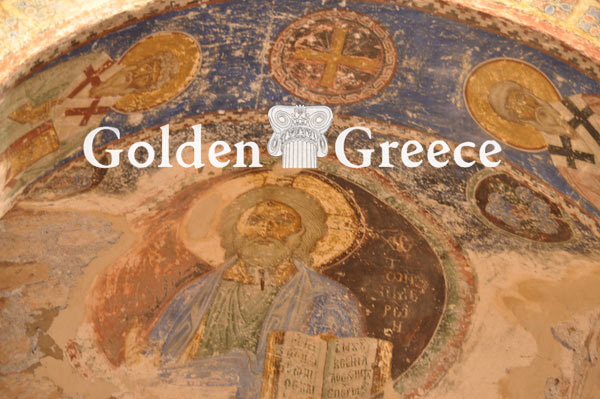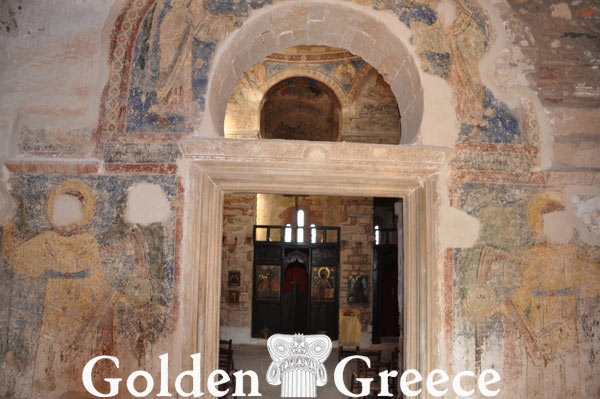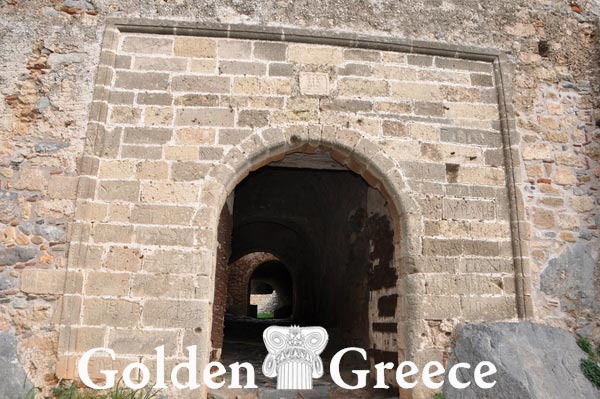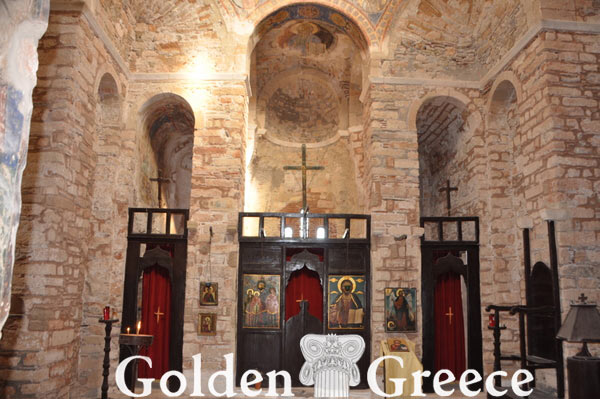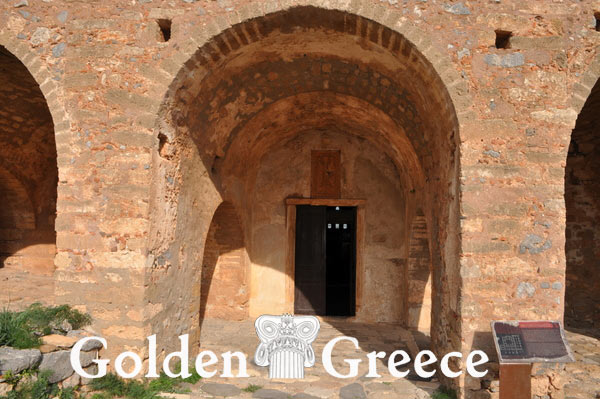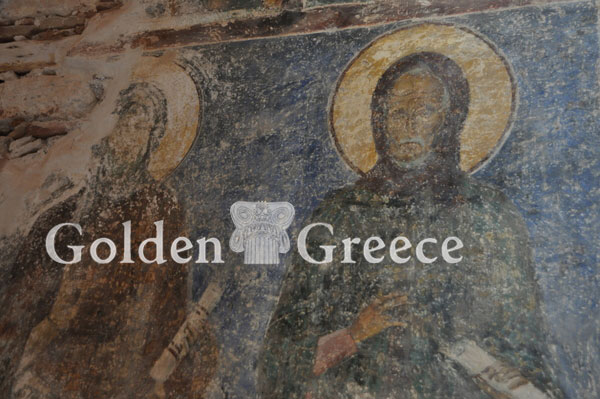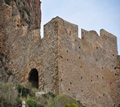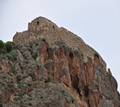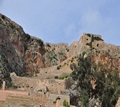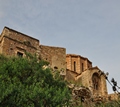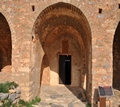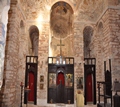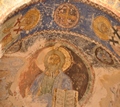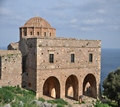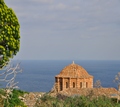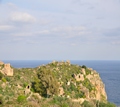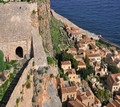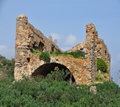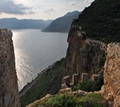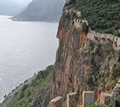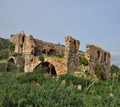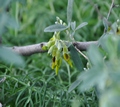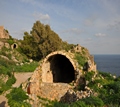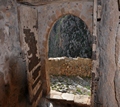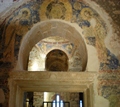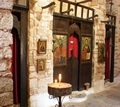
Monemvasia was first inhabited 8,000 years ago and is the only Proto-Hellenic settlement on the eastern coast of the province of Epidaurus Limira. Monemvasia was then called Akra Minoa, and it was still part of the mainland of Peloponnese and not an island, the result of an earthquake that took place centuries later.
Monemvasia continues to be a vital point-station during the Mycenaean or Late Helladic era, as it was an important Mycenaean center, developing on a pelagic path between the Mycenaean and Minoan civilizations.
Jumping back in time to the 4th century AD, when the topological map of the region changes radically, during the strongest earthquake of 375 AD, with the cutting off of part of the mainland, Akra Minoa turns into an island, Monemvasia.
The Laconians who originally inhabited it, in 582/583 AD, took refuge there in order to avoid the raids of the Avars and the Visigoths. The place was ideal as it was coastal, inaccessible and suitable for fortification. The area inhabited at that time was Goulas, or Upper City of the Rock.
Complex fortifications were made, and a bridge was built that connected the island to the opposite mainland. The city's contacts with the rest of the world became closer, resulting in the tragic decimation of the inhabitants of Monemvasia in 746 AD, due to a plague transmitted by passengers of two Sicilian ships that docked in the port. With the perfection of its defenses and its natural strategic position, the city has every reason to be a center of operations and military base of the Byzantines. The Byzantine state considered Monemvasia to be a very important region and therefore made it the administrative seat of the imperial possessions in the Peloponnese.
In 878 AD, it was used as a base for the Byzantine fleet against the Avars, under the admiral Hadrian, and a dynamic development is observed with intense naval and commercial activities of the inhabitants.
Throughout its history, Monemvasia was the object of the desire of would-be conquerors, who, realizing its geopolitical importance, constantly made attempts to bring it under their rule.
The Upper Town, as we can see today, is the safest and best fortified part of the Kastropolis.
The fortification of Monemvasia follows the system of the Middle Ages, that is, the Acropolis is located at the highest point of the City and there are two fortified precincts that divide the City into upper and lower.
The Acropolis, which stands on top of the rock, is a square fortress, with square towers at its four corners. It was the first fortification around which the first settlement developed. Due to the steep ends of the rock, it was not necessary to fortify the Upper City along its entire length, except where it was vulnerable and could be attacked by an enemy attack. The steep cliffs protected the inhabitants from raids and enemy fire.
Hagia Sophia is the only building that is almost untouched by time in the Upper City. The temple is one of the most beautiful and rarest of Byzantine architecture.
It was occupied by the Venetians, who built on the west side of the church the two-story addition that survives to this day. Popular tradition claims that Hagia Sophia has one hundred and one windows and doors. Beautiful frescoes and sculptural decorations from the Byzantine period are preserved inside the church.
Source: MONEMVASIA MUNICIPALITY
www.monemvasia.gr



